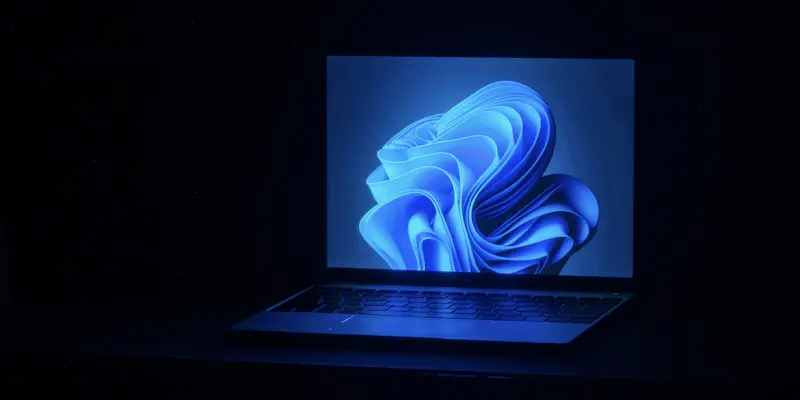On February 11, Windows 11 users received a significant update from Microsoft under the guise of the February Patch Tuesday updates. Designated as KB5051987 for Windows 11 24H2 and KB5051989 for Windows 11 23H2, this update tackled a myriad of bugs, introduced crucial security fixes, and brought several functional enhancements. The release aims to enhance user experience, rectify previous shortcomings, and ensure the overall security and stability of the Windows 11 operating system.
User Interface Enhancements
Taskbar Improvements
The Taskbar experienced several noteworthy improvements, including enhanced icon previews and animations, making navigation smoother and visually more appealing. Additionally, a new icon in the System Tray now displays if an application supports Windows Studio Effects, providing users with more information at a glance. These updates signify Microsoft’s continuous efforts to streamline the user interface and make it more intuitive and user-friendly.
A notable addition is the introduction of the Simsun-ExtB font, which caters to users who prefer simplified Chinese. This inclusion ensures a better and more visually appealing text display for Chinese content, illustrating Microsoft’s commitment to diverse user needs. The update also introduced a utility that allows specific applications to restart automatically upon signing back into the system. This feature can be enabled through the Sign-in settings, facilitating a seamless user experience.
File Explorer Updates
File Explorer, another integral part of the Windows 11 user interface, received its fair share of updates and new features as well. Among these is the addition of a “New Folder” command in the right-click context menu when selecting a drive or folder, simplifying the process of organizing and managing files. Moreover, users now have the option to restore previously opened tabs if enabled in the Folder Options, which is a stride towards improving workflow efficiency.
This update also addressed several longstanding issues, such as repetitive searches within File Explorer. Other corrections include preventing date and time properties from changing when files are copied, ensuring icons update appropriately when themes are switched, and resolving focus-related problems within the search box. These changes collectively contribute to a more efficient and user-centric File Explorer experience.
Key Bug Fixes
Improved Gaming and Audio Experiences
Beyond user interface refinements, Microsoft’s update also focused on addressing critical bugs that have impacted user experiences. For gamers, the update fixed oversaturation issues in games with Auto HDR enabled, ensuring more accurate display color rendering. Additionally, notice was taken to rectify playback interruptions with USB audio devices using Digital to Analog Converters (DACs), minimizing disruptions during audio playback.
Also, the update included a significant fix from the January 2025 security update, which had prevented USB cameras from being recognized. By resolving these issues, Microsoft has ensured that users can have a smoother, glitch-free experience with their devices. Problems related to passkeys, mobile phone timeouts, and slower shutdown processes when a controller is connected have also been addressed, further enhancing overall system performance.
Security Vulnerabilities Tackled
Security remains a pivotal concern for Microsoft, reflected in the tackling of 56 vulnerabilities with the February update. Of these, three were identified as critical. Important fixes were made to two zero-day flaws, addressing the CVE-2025-21391 vulnerability that allowed for unauthorized file deletion on targeted systems. Another critical fix targeted the CVE-2025-21418 flaw, potentially enabling remote execution of malicious code, drastically improving system security.
Ongoing improvements have been made to older zero-day faults, including the CVE-2025-21377 flaw, which posed a risk of spoofing authentication credentials. Additionally, the CVE-2025-21376 flaw, which could have allowed malicious code execution, was resolved. These measures highlight Microsoft’s priority in continuously upgrading and securing their operating system, ensuring that user data and system integrity remain protected against emerging threats.
Further Stability and Manual Updates
Preview Updates and Stability
The February update serves as the final version following a series of preview updates initially released in January. While these early versions fixed numerous bugs, they also introduced new issues, leading to the comprehensive and more stable February release. Users have reported enhanced system performance and stability post-update, reinforcing the success of these patches in providing a more seamless computing experience.
Significantly, these updates should automatically install on most PCs running Windows 11. However, those preferring a more hands-on approach can manually initiate the update. This can be accomplished by navigating to Settings, selecting Windows Update, and then clicking the “Check for updates” button. This flexibility caters to both automated and manual preferences, ensuring all users benefit from essential security and functionality improvements.
Impact and Future Considerations
On February 11, Microsoft rolled out a significant update for Windows 11 users, introduced through the February Patch Tuesday updates. This update is identified as KB5051987 for Windows 11 24H2 and KB5051989 for Windows 11 23#H2. The update addressed numerous bugs, implemented essential security patches, and included several functional improvements aimed at enhancing the overall user experience. Additionally, it aims to resolve previous issues and ensure the security and stability of the Windows 11 operating system. These periodic updates are critical to maintaining optimal performance and safeguarding against potential vulnerabilities. Microsoft continues to prioritize user satisfaction and system integrity by providing these comprehensive updates. Users are encouraged to install the updates promptly to benefit from enhanced features, better security measures, and overall system reliability. Ensuring your system stays up-to-date with the latest patches and improvements is essential for a smooth and secure computing experience with Windows 11.

